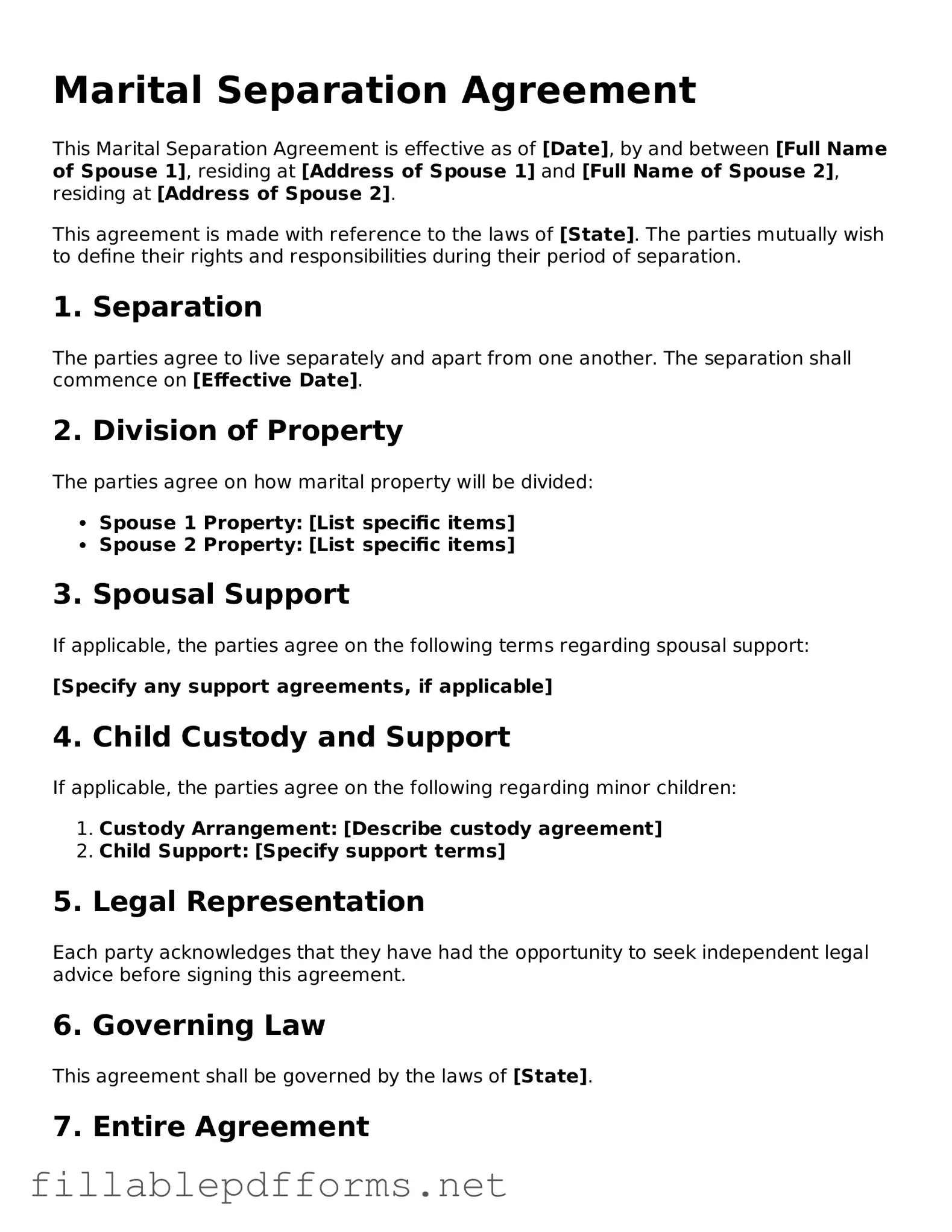Blank Marital Separation Agreement Template
A Marital Separation Agreement is a legal document that outlines the terms and conditions agreed upon by spouses who choose to live apart while remaining legally married. This form serves as a framework for addressing various issues, such as asset division, child custody, and support obligations. Understanding its components can help couples navigate the separation process more smoothly.
Launch Editor Here
